NOVEMBER 11, 2021: Not everything went smoothly today. Had several frustrating moments, but that aside, overall, it was a nice day.
The day started off well in Tomar. Tomar is the last city built by the Templar Knights. It’s main tourist attraction is the Convent of Christ, a former Catholic convent. We saw it from a distance as we drove into Tomar, and it looked incredible. However, that was not our destination.
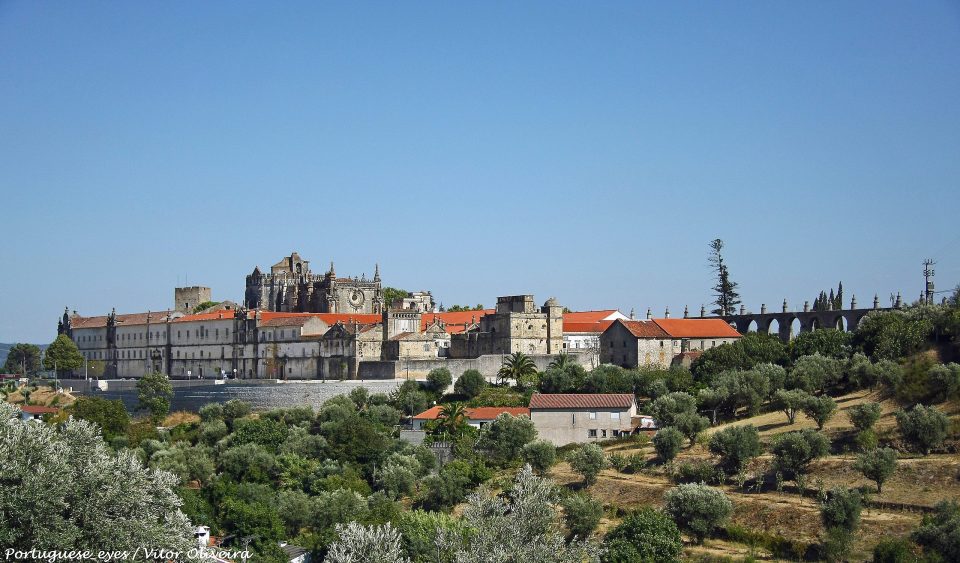
© Vitor Oliveira from Torres Vedras, PORTUGAL, CC BY-SA 2.0 via Wikimedia Commons
We came to Tomar to visit the medieval synagogue. Built in the mid-1400s, the building was active as a synagogue only until 1496, when Jews were expelled from Portugal. It now houses the Abraham Zacuto Portuguese Jewish Museum. (Abraham Zacuto, author of Almanach Perpetuum that I mentioned in yesterday’s blog).
We arrived before opening time, but the caretaker let us in early. First we saw the actual synagogue. The building over the years had fallen into disuse, but archeologists had already established this as a synagogue, when in 1922, a Polish Jew Samuel Schwarz, who was working in the Portuguese mines as an engineer, purchased the building. In 1939, he donated the building to the Portuguese government on condition that it become a museum. In exchange, Schwarz and his wife were given Portuguese citizenship, which saved them during World War II. Samuel Schwarz is also credited of discovering the hidden Jews of Portugal in Belmonte – but more about that next week, when we visit Belmonte.

Outside the synagogue 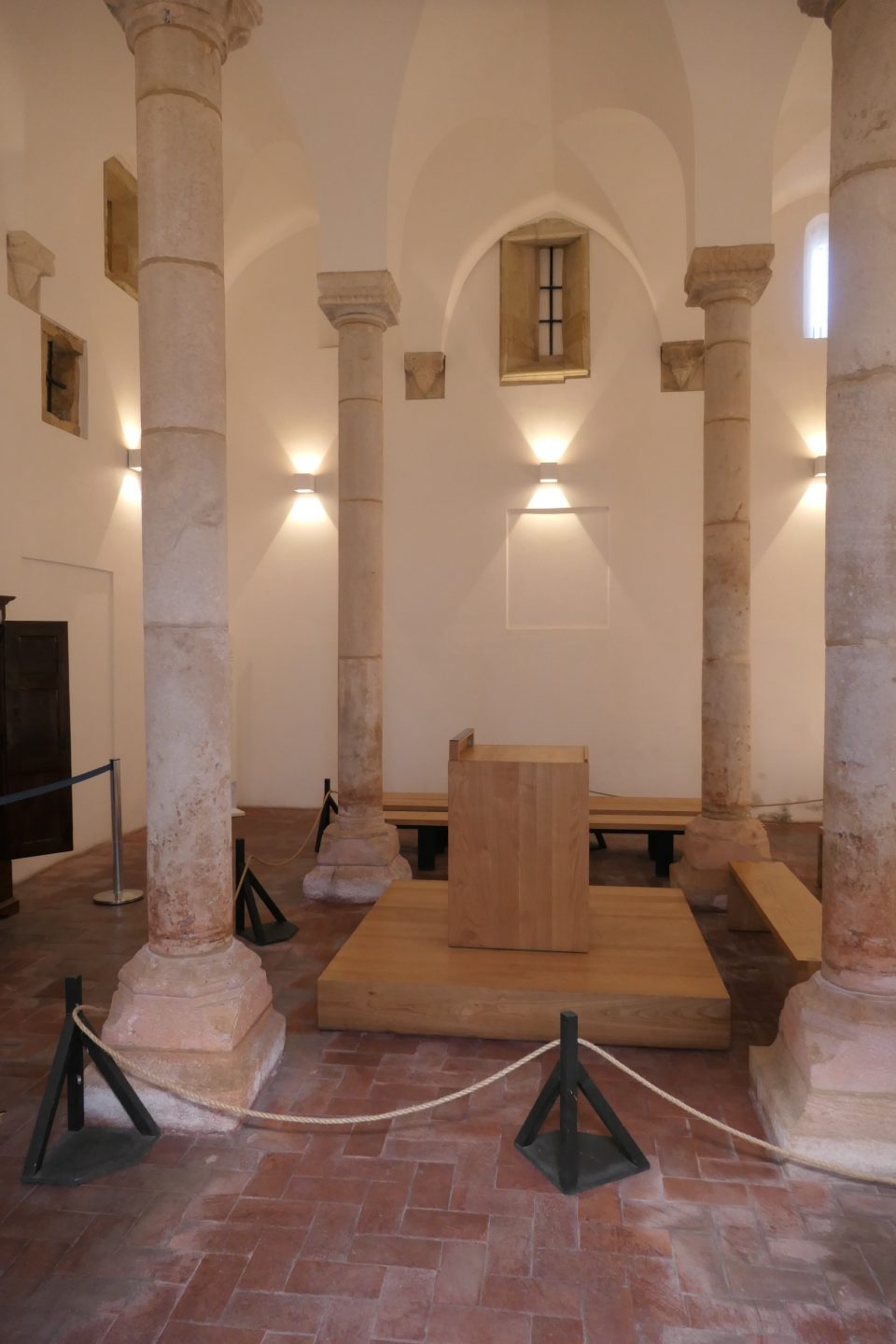
Inside the synagogue 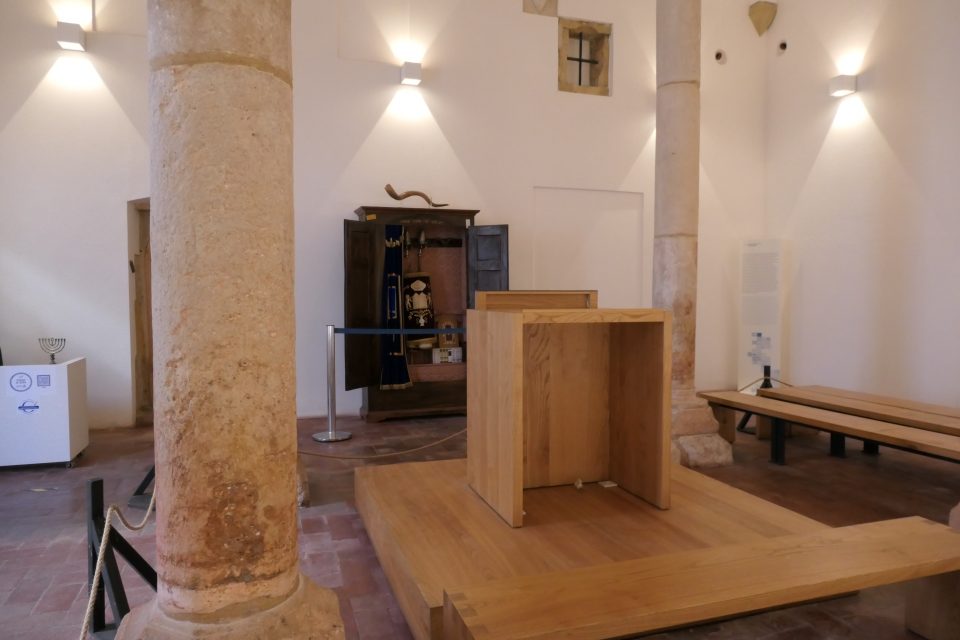
Facing the ark 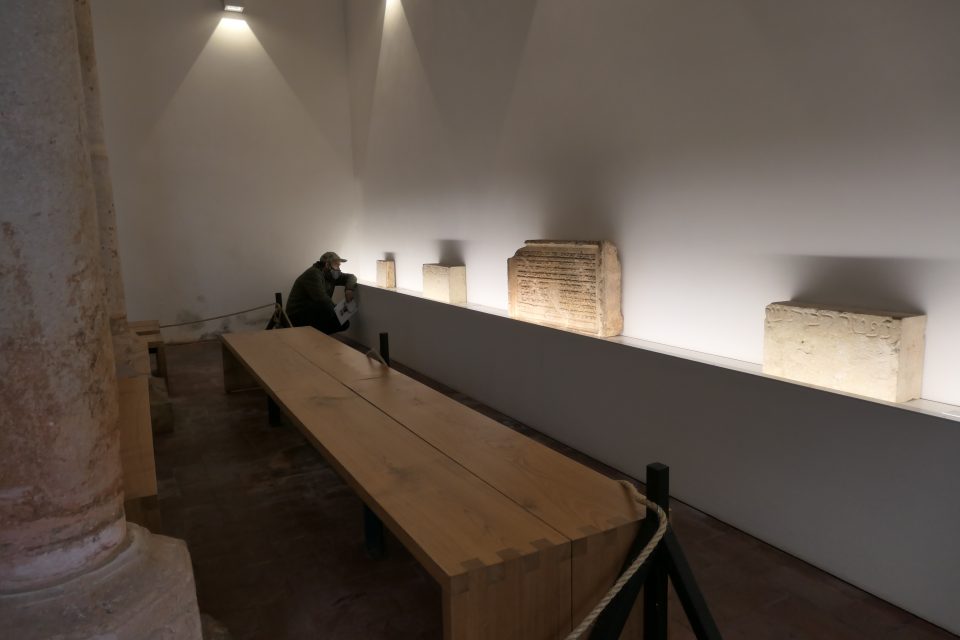
Some ancient tombstones are displayed 
Next door, you can see the mikva adjacent to the synagogue. Above the mikva, is a small one-room display detailing the history of the Jews in the area.
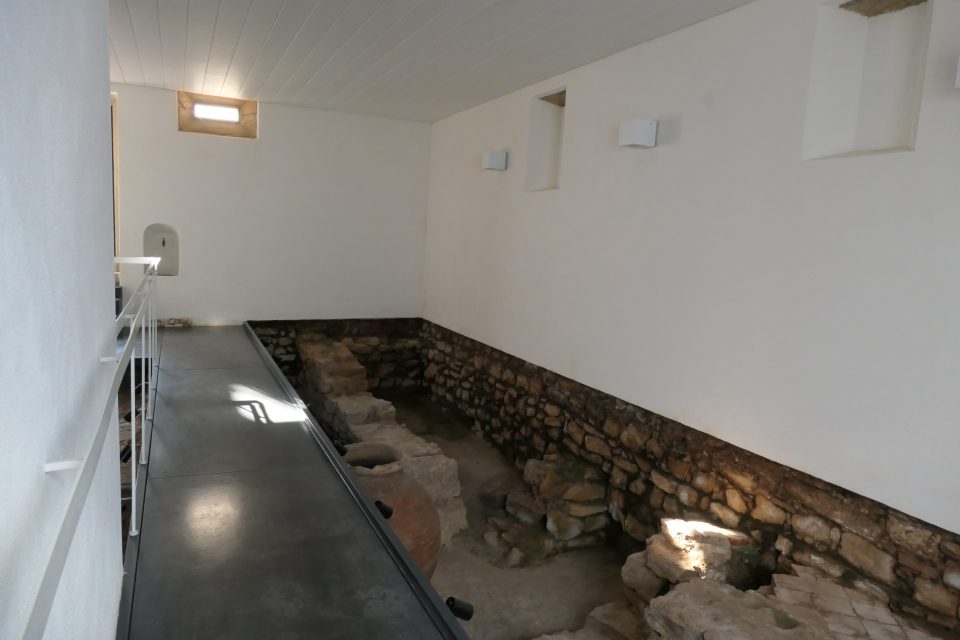
The mikvah 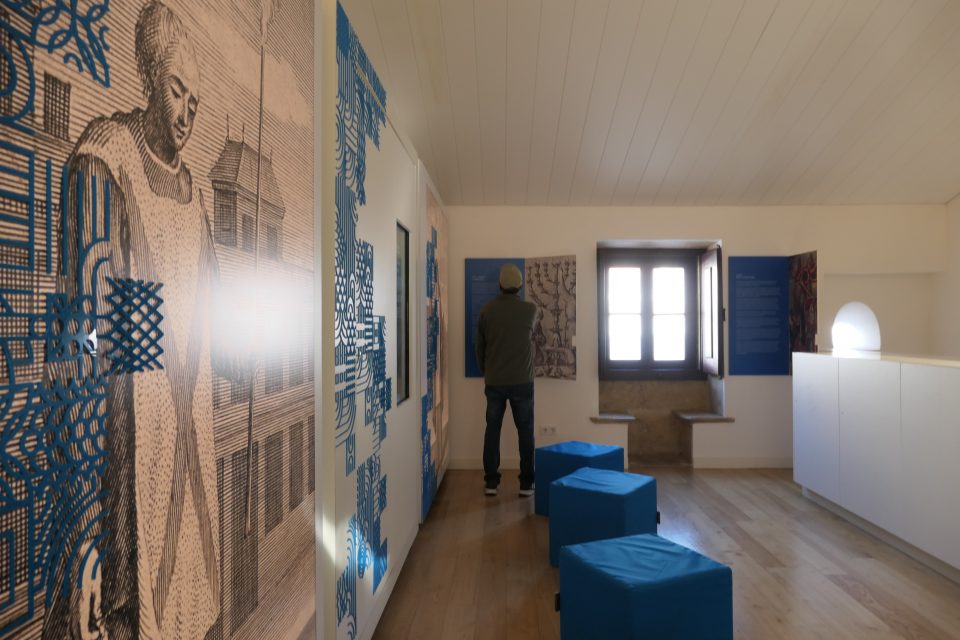
The displays 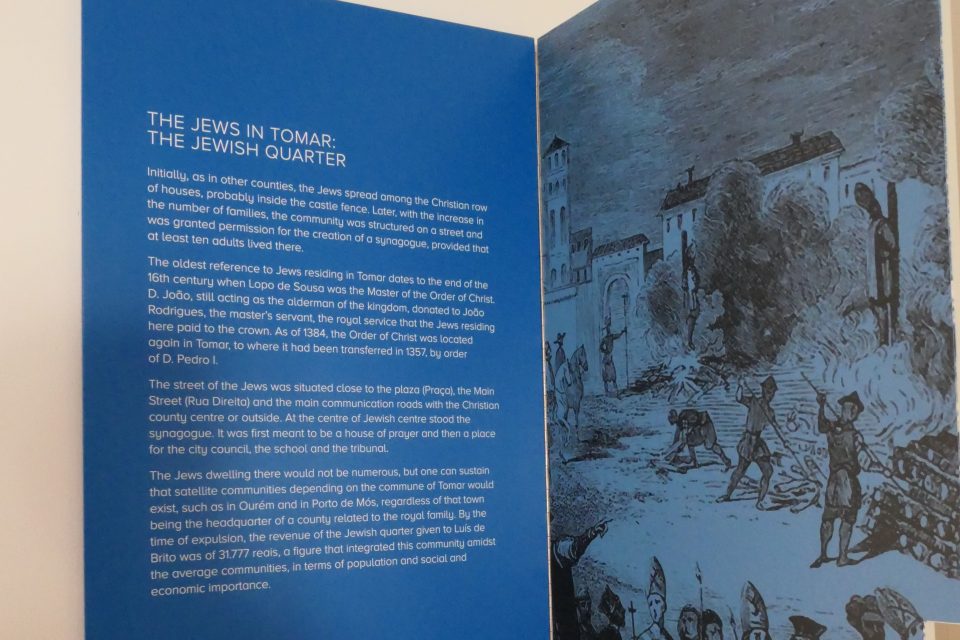
Today, especially in summer during tourist season, services are still held in the synagogue.
Our next stop was Coimbra. The plan had been to spend the morning in Tomar and then arrive in Coimbra for an afternoon tour – Jewish History of Coimbra. Unfortunately, I received an email that the tour was cancelled due to lack of participants. Frustrating. It also left us with no set plan of what to do in Coimbra. I hardly had researched the place, knowing we would be on the tour. When the day is not perfectly planned, I get anxious.
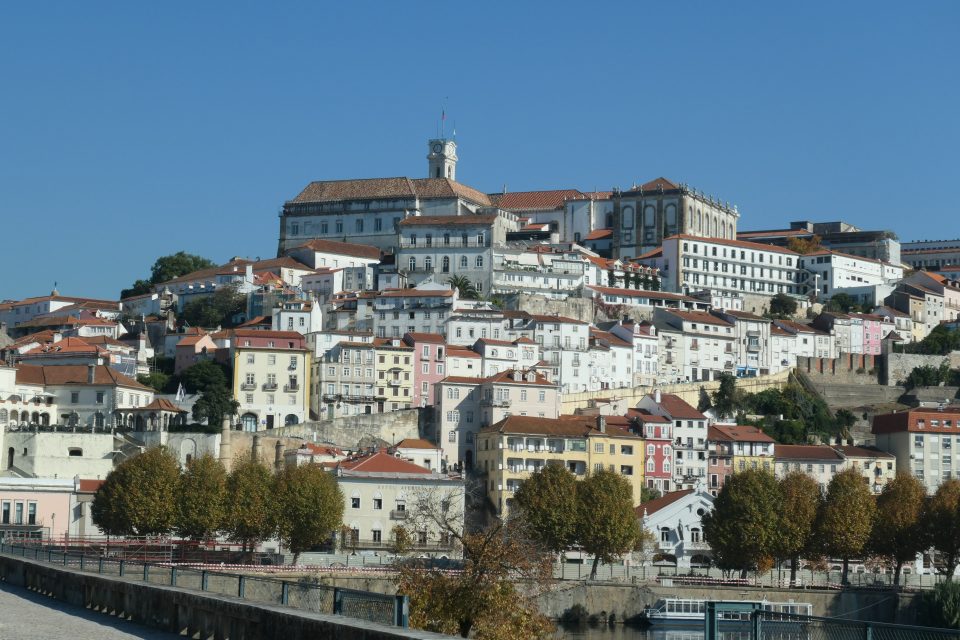
Arriving in Coimbra
In Coimbra, we were lucky to find free parking not far from the historic area. Not having a clear plan, we decided to visit the Wandering Jew sites. The closest was the Patio of the Inquisition, which I understood to be a building where you can see the inquisition prisons. On the way there, we passed Rua Nova – indicating this was the Jewish area. Rua Nova (New Street), Rua Direita (Straight Street), Rua da Estrela (Star Street) are examples of names which indicate the former existence of a Jewish quarter. Unlike Lisbon, Coimbra felt like a work-in-progress. Many of the buildings have not yet been renewed, but lots and lots of construction going on.
When we reached the Patio of the Inquisition, we learned it would only open later in the afternoon. The general plan for the day was that we would eat lunch outside, and for dinner eat our lunch sandwiches, so that we would be free to go to the laundromat this evening.
For lunch, what seemed to be the closest vegan restaurant, 400 m in Google Maps as the bird-flies, turned out to be 800 meters straight up – staircases and steep roads. It was a small vegan Mexican restaurant , O Burrito, with large portions, thank goodness. The climb had made us hungry.
After lunch, we decided to put off verifying the Wandering Jew locations – they seemed to be downhill. Instead, we went to University of Coimbra – which was not too far away, and more importantly, not much higher up the hill than we already were. Founded in 1290, the University of Coimbra is one of the oldest universities in the world and the oldest in Portugal. It is classified as a World heritage site by UNESCO.
What I really wanted to see at the university was the Joanina Library. This is a very ornate, baroque style library that houses the Abarbanel Bible, which is a rare Hebrew Bible of the 12th century, believed to be written for Don Isaac Abarbanel. The bible is not on public display, so it was questionable if the library should be a destination in Wandering Jew or not.
We reached the library, only to learn that you must pre-purchase ticket for a set time. The ticket office was on the other side of the university. It would take a long time to get there, and then we probably could not book for a tour right away, if at all. We would then need to wait for the tour to begin. Seemed too much and we decided to give up, even though it was the one thing I really wanted to see in Coimbra. Mark, not giving up so easily seeing my disappointment, checked on-line and saw it was possible to buy tickets for a tour in 40 minutes. It took him 30 of those 40 minutes to successfully go through the purchase process. Problems with Pay Pal, problems with timing out – he was very frustrated but persevered and we had tickets.
In the few minutes before the tour began, we climbed the steps to the main university plaza.
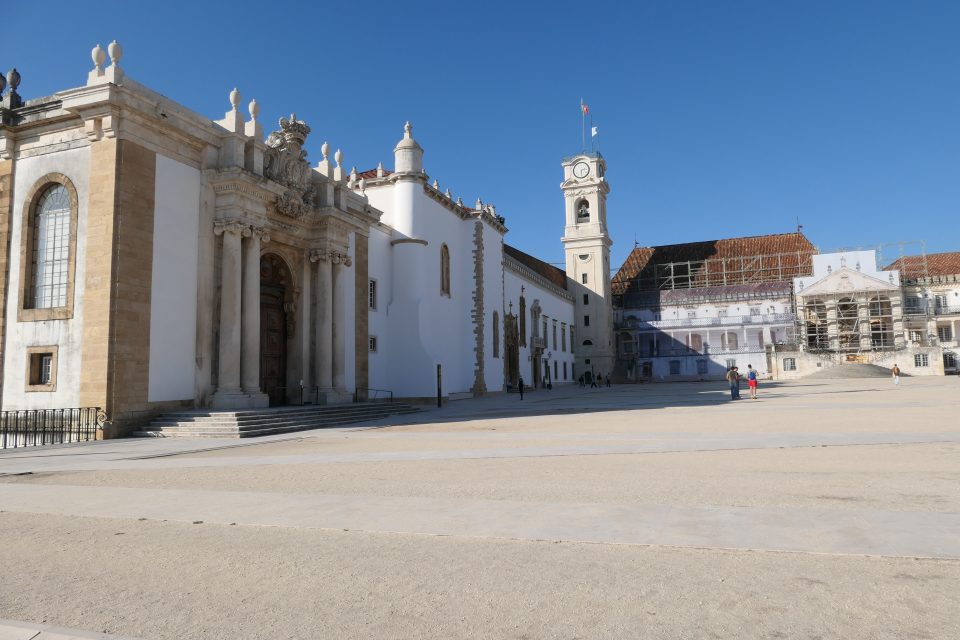
The university plaza. The Joanina Library is on the left. 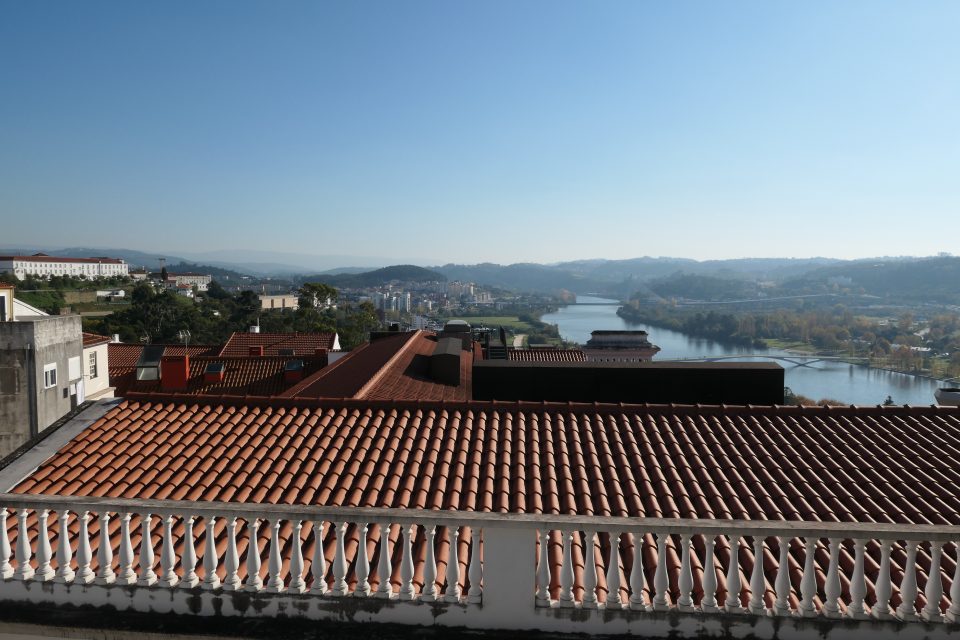
The view from the plaza
The tour started on-time. It was self-guided. They let you into one area for five minutes, and then you need to proceed to another area, for five minutes. The final area, the library itself, they allow you to stay 10 minutes. The first five minutes was to see the academic prison – basically a bunch of small, empty rooms. Not sure why academics had a prison. Next was a big reading room, that had some display cases of different, remarkable books that the library has. Here we struck gold – two relevant finds.
First, they had an actual copy of one of the books written by Abraham ben Samuel Zacatu, the same Abraham Zacuto that the museum in the Tomar synagogue is named after. The same Abraham Zacuto, that wrote the Almanach Perpetuum. Here was an original copy of one of his books!
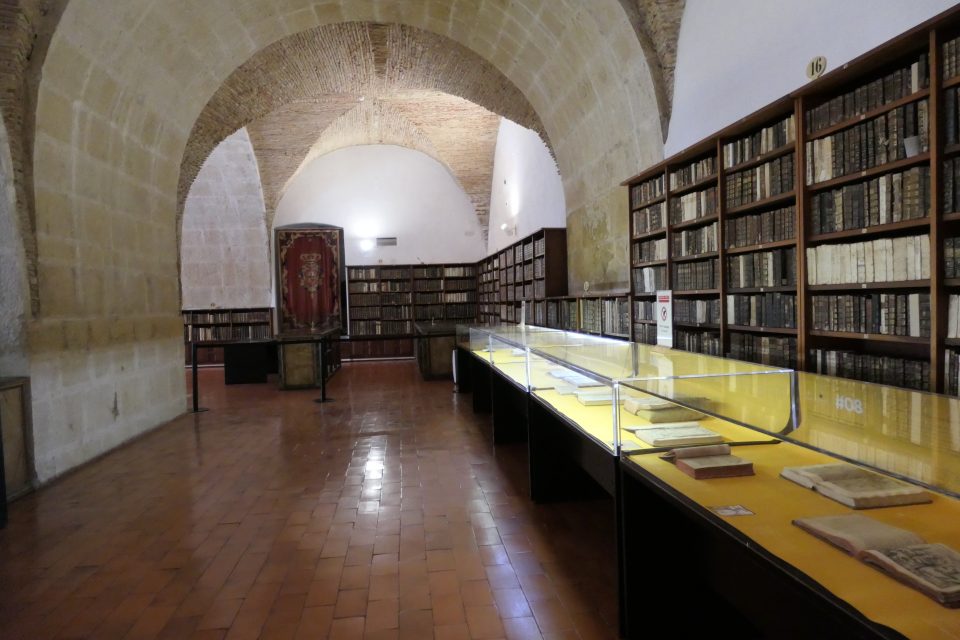
The display cases in the reading room 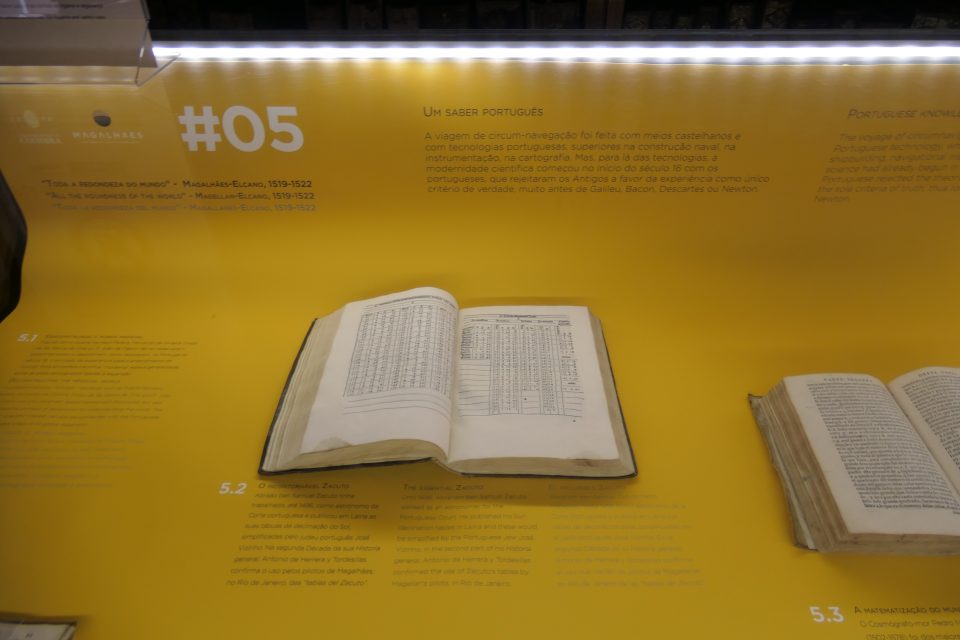
A book of astronomical tables written by Abraham ben Samuel Zacatu
Mark then spied a book with sketches of plants. This, believe it or not, were two of the Garcia de Orta’s books. Garcia de Orta is the person’s whose statue we visited at the The Portuguese Institute of Hygiene and Tropical Medicine in Lisbon on our first day in Portugal. (see my blog from November 4th). This was very exciting!
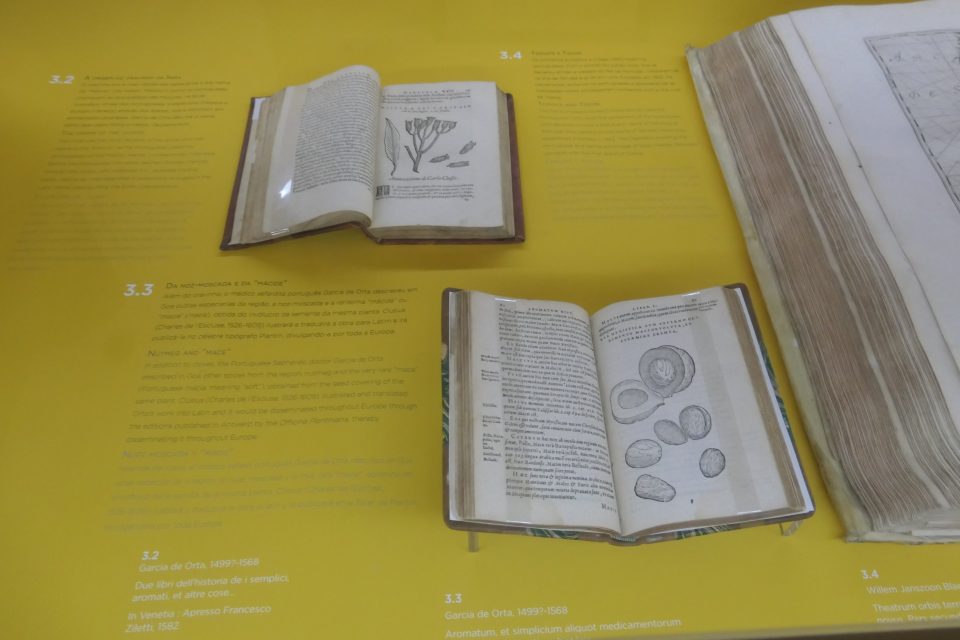
Garcia de Orta’s books
Our five minutes were up, everyone had already left the room and we then joined them in the main library. It is amazing. No photography allowed but I found this photo on Wiki Commons.
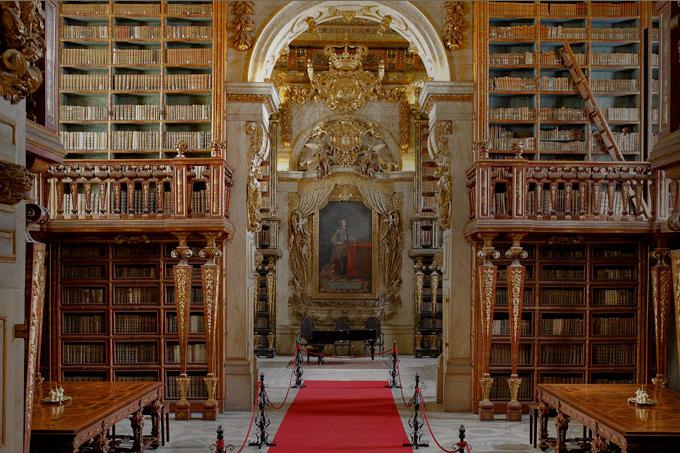
The Joanina Library
The photo only hints at the vast ornateness of the library. Gold, gold, gold everywhere. Lavish, opulent, glamourous are all words that come to mind. The library is still in use, and scholars can still request to borrow books from its shelves.
The ticket to the library also included entrance to the university tower. We went to have a look, but the tower was closed. In looking for entrance to the tower, we inadvertently came upon some groups of students. Seems to have been some sort of election going on. Notice the student in the middle in the traditional black robe.
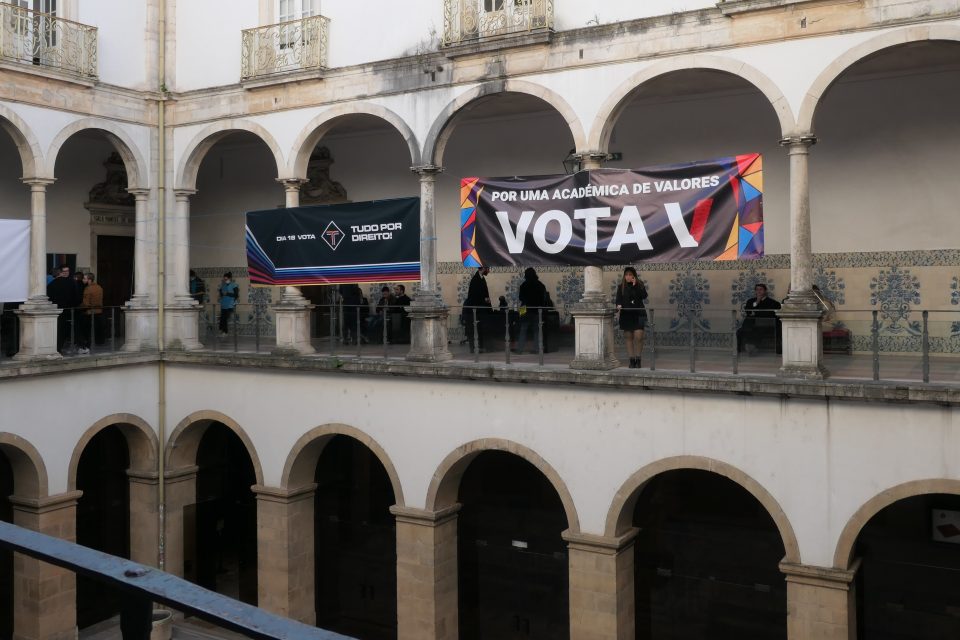
Student in a traditional black rode
We also entered a classroom to see what it was like.
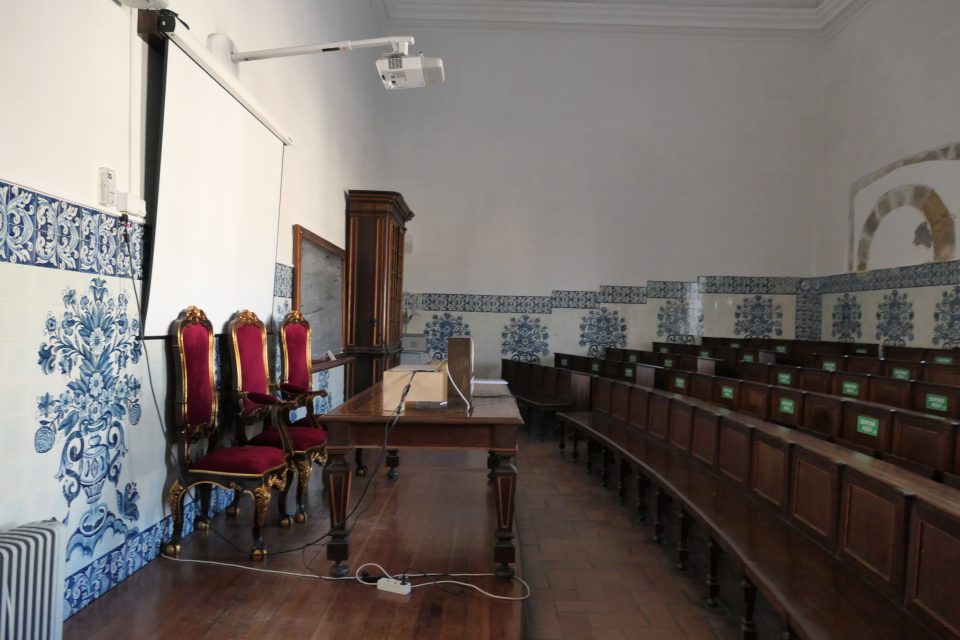
A classroom
We then very slowly headed downhill to verify the rest of the Wandering Jew sites. With my bad knee, I find uphill much easier than downhill. First stop, was the Fonte Nova ou dos Judeus (New Fountain or Jewish Fountain). Originally a fountain that marked the end of the Jewish Quarter. Over the years it was both moved to a new location and remodeled, only retaining the original name.
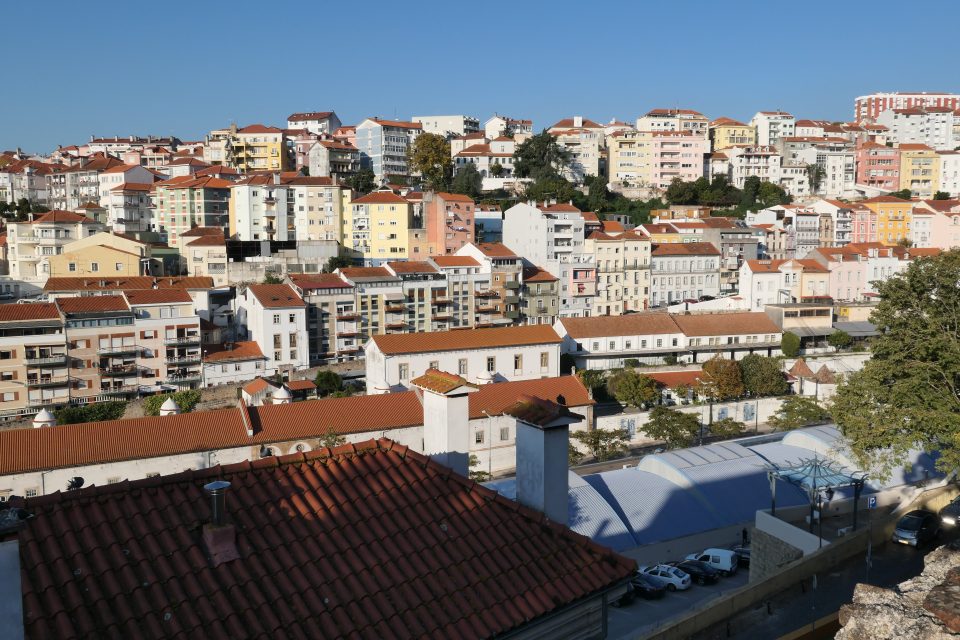
On the way down 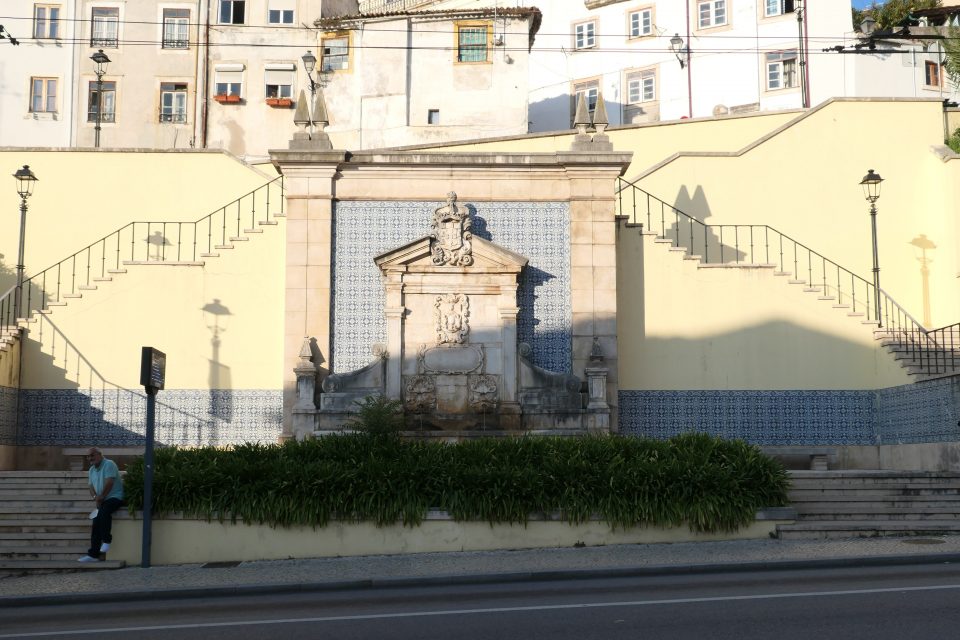
New Fountain or Jewish Fountain
From there we headed to Praça do Comércio (Commerce Square), the site of the autos-de-fé in Coimbra. A stake with the symbol of the inquisition still stands there.
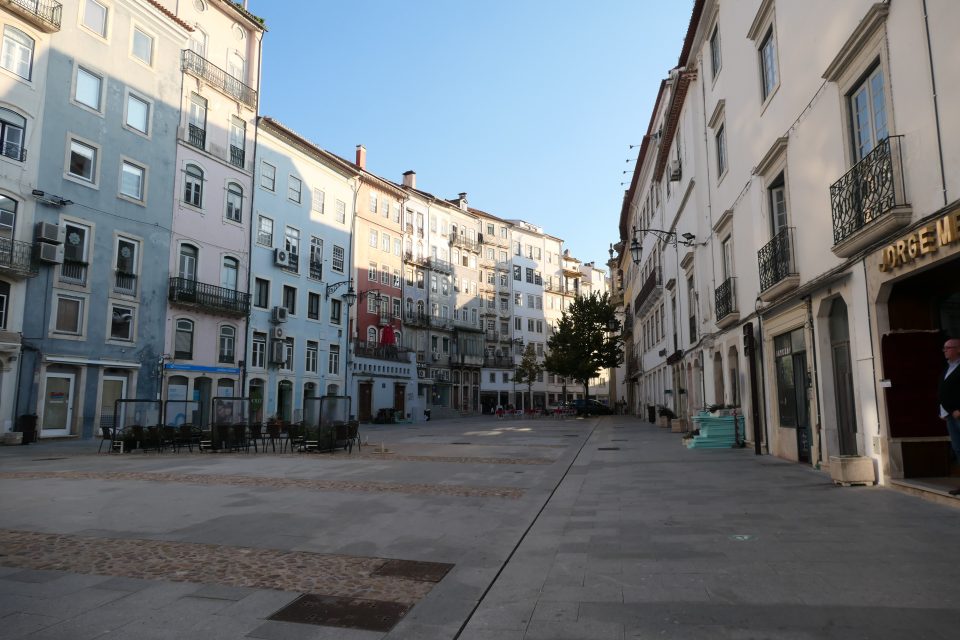
Praça do Comércio (Commerce Square) 
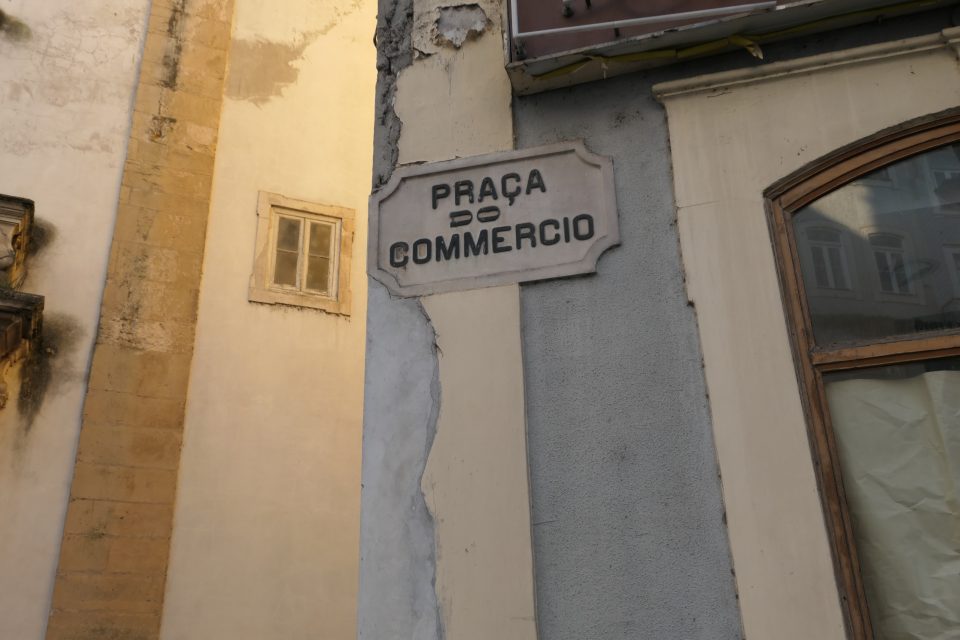
On the way there, I recognized a street name as the name of the street our apartment for that night was supposed to be on. Surprisingly, it was in a pedestrian only zone. We searched for a place that we would be able to drop our suitcases off nearby – but there was none. This had not been made clear when we ordered the place. Another frustration. I got in touch with the owner who said there was a garage 300 meters away and we should park our car there. 300 meters seemed a lot to me when you are limping with a walking stick and carrying a suitcase on cobblestones. This was upsetting news. We shoved it aside to deal with later, and continued on to Commerce Square.
From there we returned to the Inquisition Patio. Turns out to be a brand new museum, first opened this past June, that is all about the Jews of Coimbra.
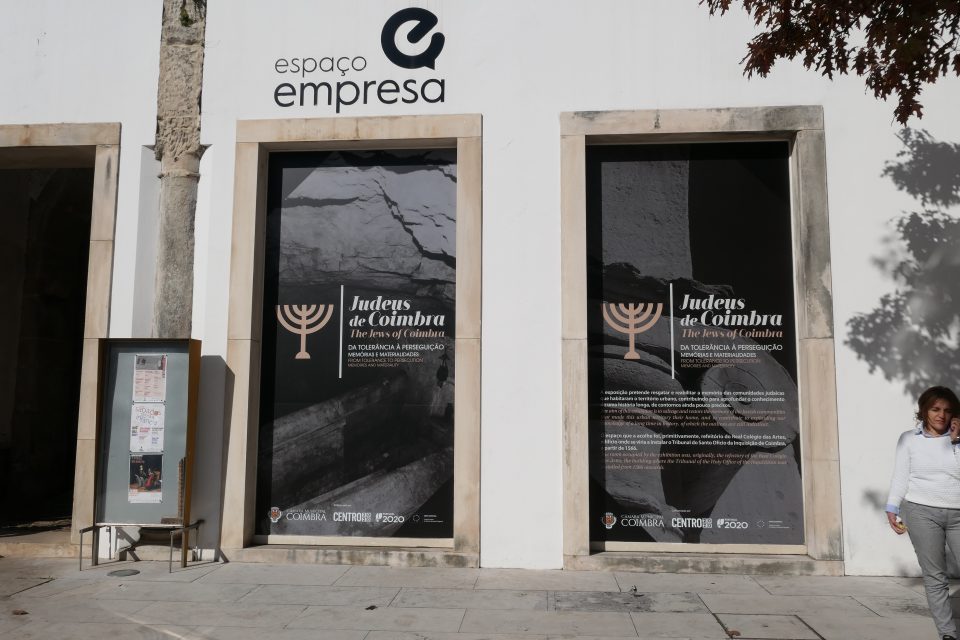
Patio of the Inquisition
Three large rooms with panels describing the history of the Jews of Portugal.
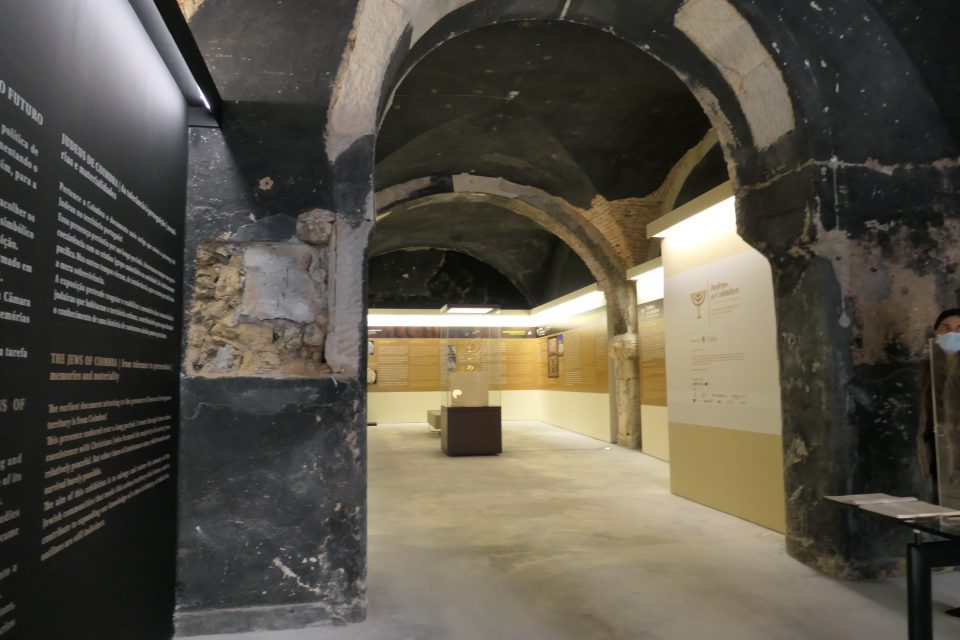
Entrance to Patio of the Inquisition Museum 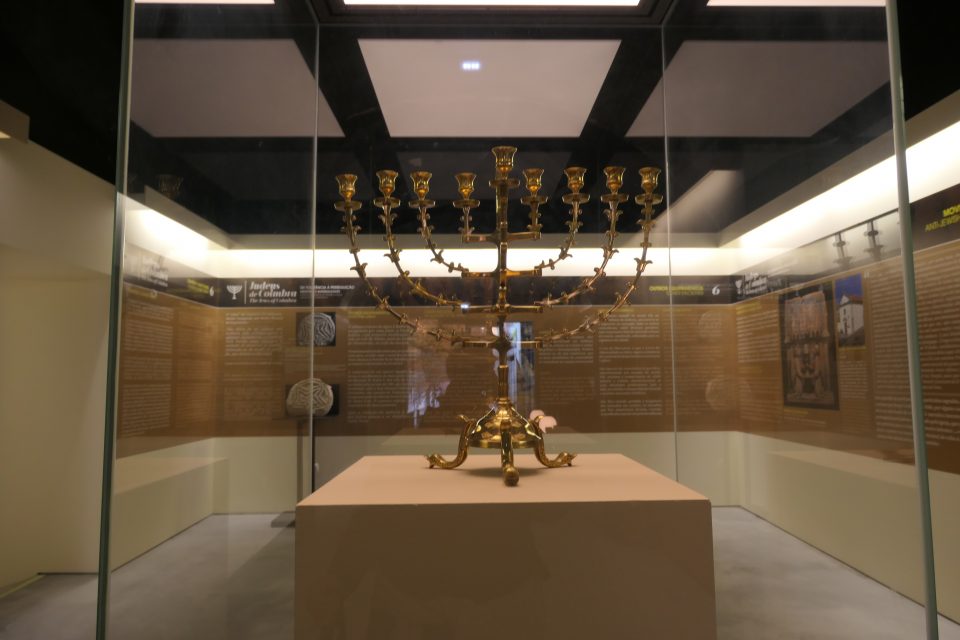
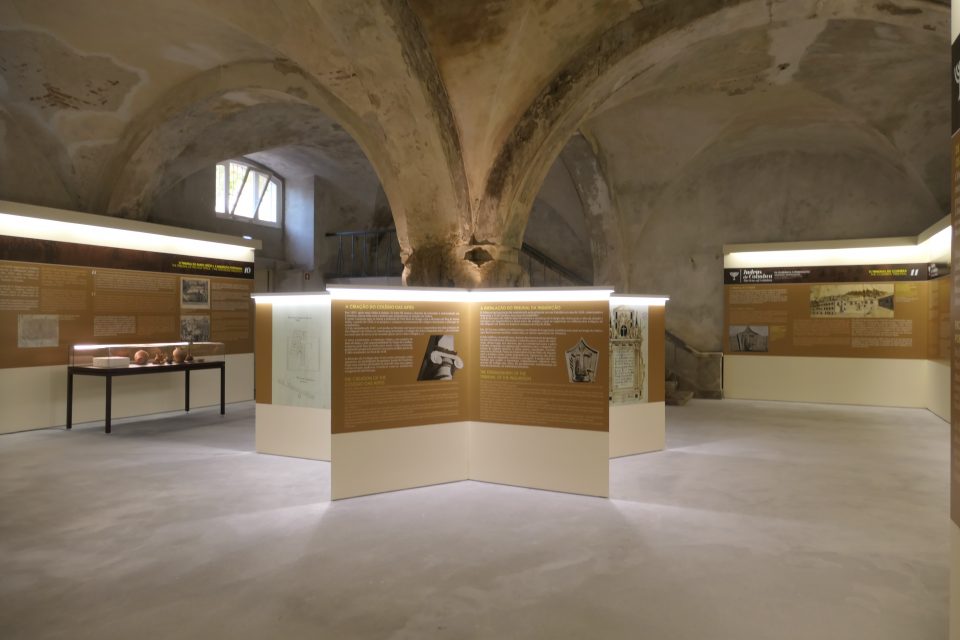
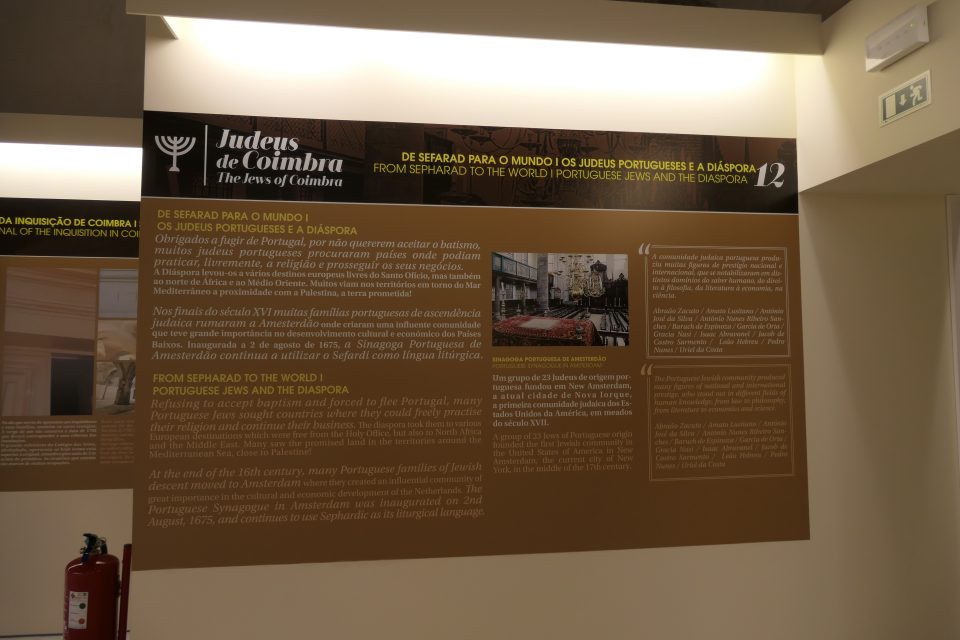
It is housed in the actual building where the inquisition trials took place. There are even some of the actual prison rooms that you can walk through.
This was a nice way to end the day. Now we needed to make it to the apartment. We parked the car in the garage our host recommended, grabbed the minimum we need for the night – 1 large suitcase, 1 carry-on, 1 thermos bag of food, 1 breakfast bag and the 2 backpacks with our valuables (passports and computers). Unfortunately, we took a wrong turn and overshot the apartment by a bit, but eventually found our way. We were given a code to enter the building and we try and try to open the door. Exasperated, I call the host. She apologizes and says that she sent us the wrong code. We finally open the door to the building and are surprised to see a very long steep staircase. We were supposed to be one flight up (no elevator) but the one flight had as many steps as two. Not a very smooth check-in process.
We made it into the small apartment, and happily discover that there is a washing machine. Mark returned to the car once again, discovered a much shorter route that is flat and not cobblestones, and brought our three laundry bags. We were about to do laundry, when we discovered there is no laundry detergent. At this point, we gave up on laundry, had dinner (cup-of-soup, salad and sandwiches) and I fell asleep, while Mark does his studying and some work for Verifone.
Tomorrow is another day.



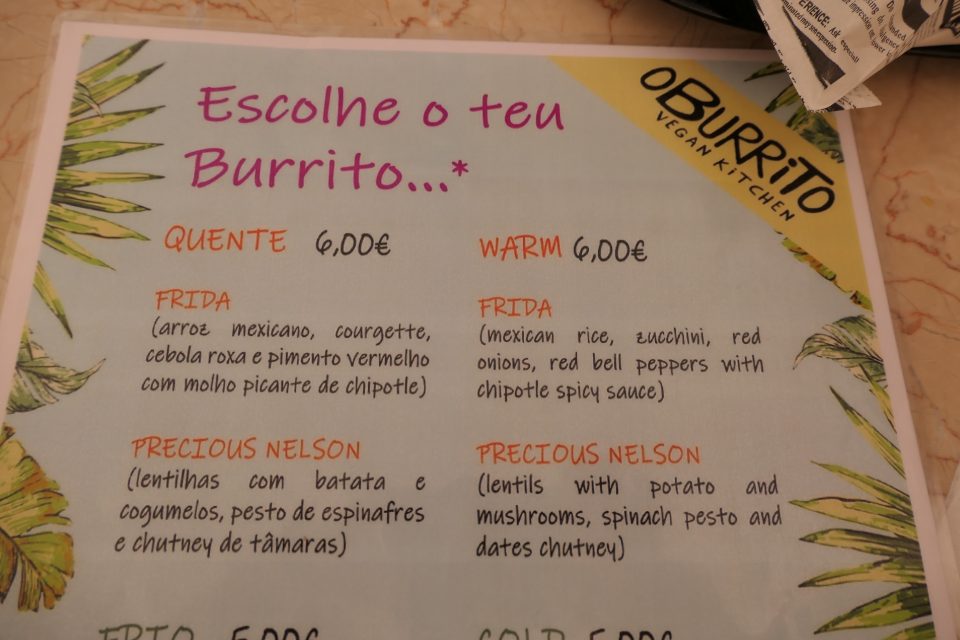
What a day! Always good to have laundry detergent on you!
Always remember that eventuly things will work themselves out